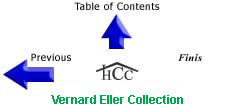"The Revelation of Jesus Christ, Made Known to John" (Continued)
An Epilogue
A goodly number of scholars have suggested that Revelation is a composite work patched together out of apocalyptic fragments from different hands, different traditions, and different times. Frankly, I find the proposal completely incredible; Revelation strikes me, rather, as being the most finely crafted book of the Bible. The author comes across as a consummate artisan and artist. (I intend that attribution as applying to the Holy Spirit just as much as to John; my conviction is that the Spirit normally appropriates and uses the gifts of his instrument rather than simply overriding them.)
The John-Spirit artistry is seen particularly in the ability to hold a great diversity of thought and imagery into true coherence. It shows up in three different ways.
- John introduces a symbol in one scene, develops some aspects of it, then drops it and goes on to something else. Yet, in a later scene, he will circle back to pick up the symbol again--bringing recollection of the meaning with which he had endowed it earlier--but in a way that, rather than being simply repetitious, adds new and growing insight. The changing use of the symbol makes it a vehicle of newness and diversity; the constancy of the symbol itself makes for a profound unity. As just one example, recall what John accomplishes with the Lamb symbol in the course of the book as a whole.
- In other cases, John introduces and reintroduces the same idea but states it through differing images and symbols. Again, there is a basic unity of thought; but the diversity of form keeps things from becoming redundant and boring. As an example in this case, recall how many were the different ways John found to affirm the universality of God's love and outreach toward man.
- Finally, in and through the flux of image and idea, it is thrilling to discover the pattern and symmetry of the structure underlying the whole. The outline and time line chart will recall what we have in mind; Revelation, obviously, is a book that was "built" (as a cathedral is built) rather than simply being "spun out." John was able to display great freedom and variety in detail even while forming the whole as a controlled and unified vision.
John can keep any number of themes going at once, giving the prominence first to one and then another, each being appropriately developed as it progresses, and each being kept in perfect phase with the others so as to bring them all out at the same place. And then, looking back, one realizes that all the individual-theme patterns were being woven together to form one, overall pattern which included each but was greater than the sum of them all. I know of only one other artist who could match it--another man named "John."
Johann Sebastian Bach inscribed his musical polyphony Soli Deo Gloria. John the Revelator's work obviously bears the inscription on every page-whether or not the words "to God alone be the glory" appear. My desire is that this book be dedicated the same way:

|
Copyright (c) 1974 |
